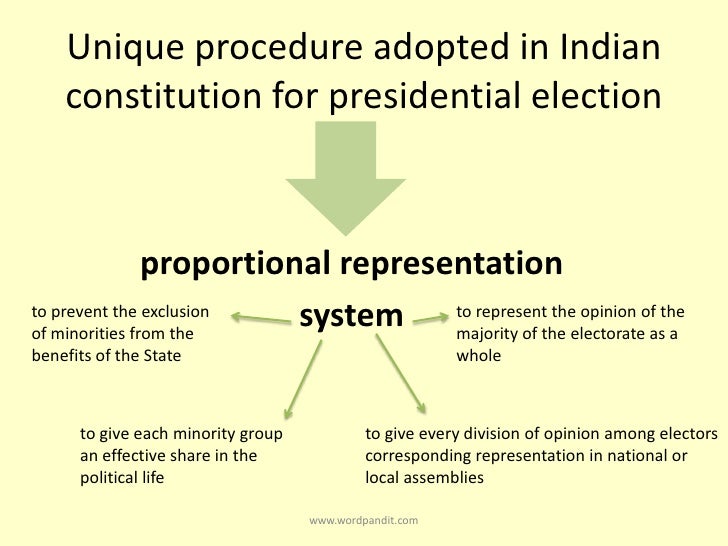Who won the Presidential Election? How is a President Elected? What are the qualifications?
A presidential election was held in India on Monday 17 July 2017 with the votes counted and the results announced on Thursday 20 July. President Pranab Mukherjee’s term of office was due to expire on 24 July 2017. Mukherjee declined to seek re-election.
Governor of Bihar Ram Nath Kovind of the Bharatiya Janata Party had the backing of the governing National Democratic Alliance coalition, and went up against opposition candidate Meira Kumar of the Indian National Congress in the vote. Kovind secured roughly two-thirds of the votes from the electoral college of elected members of federal, state and union territory legislatures and was elected to a five-year term as President. Kovind’s term of office will begin on 25 July 2017.

Kovind was born in Kanpur Dehat, Uttar Pradesh. His father was a farmer. He holds a Bachelors degree in commerce and a LLB from DAV College, (affiliated with Kanpur University). He joined the BJP in 1991.He was President of the BJP Dalit Morcha between 1998 and 2002 and President of the All-India Koli Samaj. He also served as national spokesperson of the party. He donated his ancestral home in Derapur to the RSS. He contested from Ghatampur and Bhognipur (both in Uttar Pradesh) assembly constituencies on the BJP ticket but lost both elections. He was elected and became a Rajya Sabha MP from the state of Uttar Pradesh in April 1994. He served a total of twelve years, two consecutive terms, until March 2006. As a member of parliament he served on the Parliamentary Committee for Welfare of Scheduled Castes/Tribes, Home Affairs, Petroleum and Natural Gas, Social Justice and Empowerment, Law and Justice. He also served as the chairman of the Rajya Sabha House Committee. During his career as a parliamentarian, under M.P. L.A.D. Scheme, he focused on education in rural areas by helping in construction of school buildings in Uttar Pradesh and Uttrakhand. As a member of parliament, he visited Thailand, Nepal, Pakistan, Singapore, Germany, Switzerland, France, the United Kingdom and the United States on study tours.
On 8 August 2015, the President of India appointed Kovind as Governor of Bihar. On 16 August 2015, the acting Chief Justice of Patna High Court, Iqbal Ahmad Ansari, administered the oath to Kovind as the 36th Governor of Bihar. The function took place at Raj Bhawan, Patna.
As Governor, he was praised for constituting a judicial commission to investigate irregularities in promotion of undeserving teachers, mis-management of funds and appointment of undeserving candidates in universities
Eligibility to be the President of The Republic of India:

The following are the compulsory requirements for anyone to contest the election for the President of India:
- Must be a citizen of India
- Must have completed 35 years of age
- Must be eligible to be a member of the Lok Sabha.
- Must not hold any office of profit under the Government of India or the Government of any State or under any local government (Exceptions are the offices of President and Vice-President, Governor of any State and Ministers of Union or State)
Other conditions to be fulfilled to contest:
Apart from the above conditions, the nomination paper of a candidate has to be signed by at least fifty (50) eligible voters as proposers and at least fifty(50) eligible voters as second in deserving. Here the voters are the MPs & MLAs and non citizens. A voter cannot propose or second more than one candidate.

The difference between a normal election & the Presidential election:
The one major difference between any normal general election and the Presidential election is the differential value of votes of various electors (voters). In any normal election, the value of the vote of every citizen is the same. His/her vote is counted as one vote. But in the Presidential election, the value of the MP vote is different from the value of a MLA vote. Not just that, the value of a MLA vote from one state differs from the value of the MLA vote of another state. The value of all the votes put together is the value of the voters for the election. Before each such election, the Election Commission notifies the total value of all the votes based on vacancies etc at that point in time.
The value of votes is calculated in the following manner:
The value of votes of electors (voters) is basically determined on the basis of population of the States. Since population figures are dynamic and keep changing every year, it has been decided through the 84th Constitutional Amendment, that until the population figures for the first census after 2026 are published (in other words, 2031 census), the population of the States for the purpose of this calculation will mean the population as per the 1971 census.

The Process for calculating the Value of MLA vote:
The value of the vote of each MLA is calculated by dividing the population of the State as per 1971 Census, by the total number of elected members of the respective state assembly, and then to divide the quotient by 1000. Total Value of all members of each State Assembly is obtained by multiplying the number of seats in the Assembly by the number of votes for each member.
The Process for calculating the Value of MP vote:
The total value of votes of all the States is divided by the total number of elected members of Parliament (Lok Sabha 543+Rajya Sabha 233) to get the value of votes of each Member of Parliament or the MP. For 2017, this worked out to be 708. The value of a MP vote is substantially higher than the value of a MLA vote. It is in fact 3.5 times the value of a MLA’s vote in Uttar Pradesh where the value of MLA vote is maximum.
- Both the values (MP & MLA) are added to the total value of the votes for any Presidential Election. In 2017, this value was 10,98,903 (549408 for MP & 549495 for MLA). The total number of eligible voters in the 2017 election is 4896 (776 MPs & 4120 MLAs from states).
The Election Process:
A ballot paper is given to each voter with the names of the contesting candidates, green ballot paper for MPs & Pink ballot paper for MLAs. This election happens through the Single Transferable Vote (STV). Hence each voter can mark as many preferences, as the number of candidates contesting the election. These preferences for the candidates are to be marked by the voter, by marking the figures 1,2,3, 4, 5 and so on, against the names of the candidates, in the order of preference.

Counting Process:
The winning candidate has to secure the required quota of votes to be declared elected, i.e., 50% of valid first preferential votes polled +1. After the valid ballot papers are segregated from the invalid ones, the valid ballot papers are distributed among the contesting candidates on the basis of first preference marked on each of them for those candidates. The value of votes in favor of each contesting candidate is ascertained by multiplying the number of ballot papers on which the first preference is marked for him, by the value of vote which each ballot paper of a member (MP or MLA) represents. The total vote secured by each contesting candidate is then ascertained by adding together the value of votes secured by him from the MPs and the MLAs. This is the first round of counting.
To ascertain whether there is a winner after the first round of counting, the value of votes credited to each contesting candidate in the first round of counting is added up to determine the total value of valid votes polled at the election. This total value is divided by two and one is added to the quotient to determine the required quota for victory (50% +1). If any of the candidates receives the required number of votes in the first round, he is declared a winner.
However, even after the first round of counting, no candidate secures the required quota of votes, then the counting proceeds through a process of elimination and exclusion, whereby the candidate credited with the lowest number of first preferential votes in the first round is excluded and all his ballot papers are distributed among the remaining candidates on the basis of the second preferences marked in such ballots. The value of such transferred ballot papers will be the same as the value at which the excluded candidate received them. The ballot papers on which second preference is not marked is treated as exhausted ballot papers and shall not be further counted, even if the third or subsequent preferences are marked. This process is continued until there is a clear winner with 50% +1.
BY,
Ritu Jagwani.


